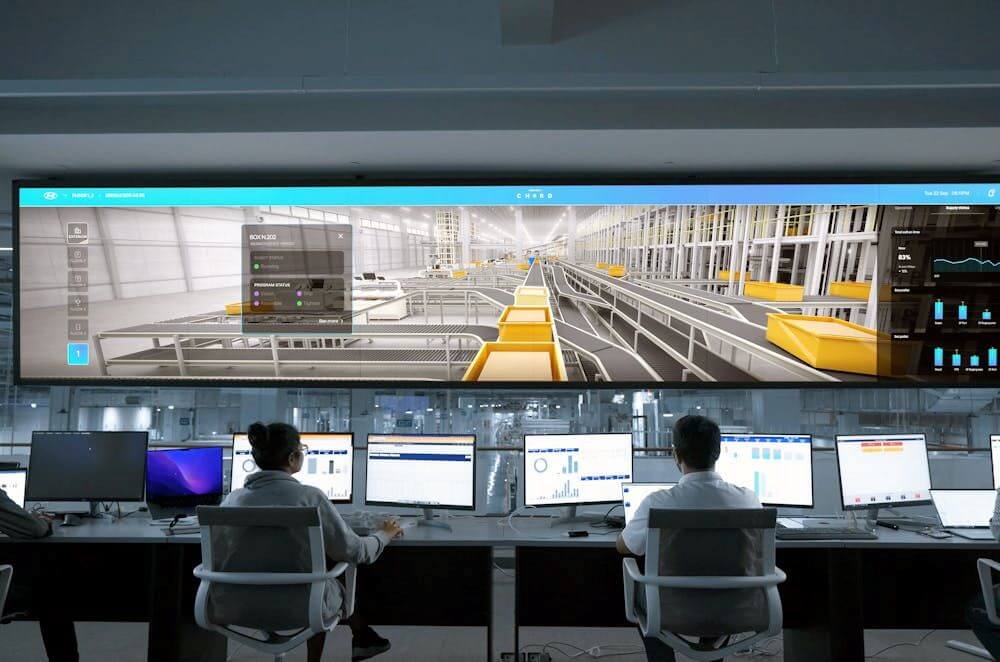Business operations are changing faster than ever. The systems, tools, and methods that worked just a few years ago are being replaced with faster, smarter, and more connected solutions. This shift isn’t just about keeping up—it’s about staying ahead. Companies that adapt quickly will lead, while others may fall behind.
The trends shaping this new era are not limited to technology. They also include how people work, how decisions are made, and how companies stay competitive. From automation and data use to sustainability and talent development, understanding these trends can help businesses improve processes, reduce waste, and grow in smarter ways.
1. The Rise of Industrial IoT (IIoT)
One of the biggest changes is how machines and systems now connect and communicate. Industrial IoT allows companies to link sensors, machines, and software, creating a network of real-time data. This helps monitor equipment performance, detect problems early, and reduce downtime. With better insights, businesses can react faster, avoid costly errors, and boost efficiency. The rise of IIoT is helping operations become more predictable, safe, and responsive.
2. Upskilling for a Tech-Driven World
As production systems become more advanced, there’s a growing demand for professionals who understand automation, systems thinking, and data analytics. Businesses are looking for team members who can manage this change, not just keep up with it. Learning how to work with new technologies is now a key part of staying valuable in the workplace. Enrolling in a specialized program like a smart manufacturing course is a great way to build these skills. This program is fully online, flexible, and designed for working professionals. It focuses on practical knowledge in operations, leadership, and real-world systems. The program helps students develop skills they can apply immediately while preparing for leadership roles in today’s fast-changing environments.
3. Automation Beyond the Assembly Line
Automation used to mean machines doing repetitive tasks. Today, it covers much more. From sorting inventory to running reports and checking quality, automation now plays a role in many areas of business. These tools help teams work faster, reduce mistakes, and handle more work with fewer resources. It’s not about replacing people—it’s about letting them focus on tasks that need human thinking and creativity.
4. Data-First Decision Making
Data plays a central role in guiding business decisions in today’s fast-paced environment. It’s no longer just a tool used after the fact—real-time insights are shaping actions as they happen. With dashboards, sensors, and analytics platforms, companies can detect problems early, respond faster, and avoid costly delays. This leads to better forecasting, improved resource allocation, and stronger performance. By relying on accurate data rather than assumptions, teams can make informed choices that support long-term goals, reduce risks, and create more efficient, responsive operations across the entire workflow.
5. Sustainable Operations as a Business Priority
Sustainability is no longer optional—it’s a key part of smart business strategy. Companies are focusing on reducing waste, lowering energy use, and building more efficient systems. These efforts benefit the environment, help cut costs, and improve long-term performance. Consumers, investors, and regulators increasingly expect responsible practices, making sustainability a factor in reputation and competitiveness. Cleaner operations also lead to fewer risks and stronger compliance. Today, businesses prioritizing sustainability are better positioned to succeed, adapt, and grow in a market that values performance and responsibility.
6. Human-Machine Collaboration
Technology is growing fast, but people are still at the center of every successful operation. Now, instead of replacing workers, machines are working alongside them. Collaborative robots, or “cobots,” are helping teams do physical tasks more safely and with greater precision. This approach makes work easier while still using human judgment where it’s needed. Businesses are also training staff to work with new systems, helping create a workplace where people and machines support each other.
7. Cybersecurity in the Age of Industrial Connectivity
As more systems connect through the internet, the risk of cyberattacks is increasing. Operations that rely on digital tools and cloud-based data must be protected. Hackers can now target supply chains, equipment, and sensitive information. Companies are building stronger security strategies to stay safe, including regular system checks, employee training, and secure network designs. Cybersecurity is no longer just an IT issue—it’s a core part of running a smart, connected operation.
8. The Role of Artificial Intelligence in Operational Optimization
Artificial intelligence (AI) is helping businesses make better, faster decisions. In modern operations, AI can analyze large amounts of data, find patterns, and offer useful suggestions. It supports tasks like quality control, inventory tracking, and demand forecasting. Instead of relying only on experience, teams can now use AI tools to test ideas, reduce waste, and improve results. AI is becoming a trusted tool to help companies operate more smoothly and effectively.
9. Agile Production Models and Customization
Customers today expect products to meet their specific needs and want them fast. That’s why companies are moving toward more flexible ways of producing goods. Agile production allows businesses to adjust quickly to demand changes without slowing down. Small batch sizes, digital prototypes, and modular setups make it easier to offer customized products while keeping costs low. This flexible model is becoming key to staying competitive in fast-moving markets.
10. Global Supply Chain Reinvention
Recent events have shown how fragile global supply chains can be. Delays, shortages, and unexpected problems have forced companies to rethink how they source and ship materials. Many are investing in local partnerships, better tracking tools, and backup suppliers. Technology like digital twins and real-time logistics software is helping teams predict and avoid issues. Building a stronger, more reliable supply chain is now a major goal for many businesses.
Change is no longer something that happens once in a while—it’s constant. The trends reshaping operations create new risks and exciting new opportunities. Companies that stay alert and respond quickly will have a clear advantage over those that wait too long. From smarter systems to stronger teams, the future belongs to those who take action. By understanding these trends and investing in people, tools, and strategy, businesses can stay ahead and thrive in this new era of operational change.




